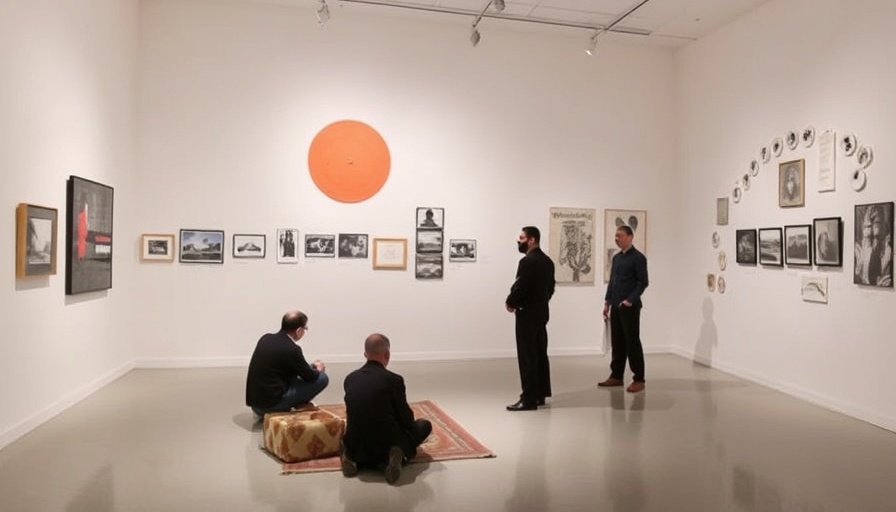
Understanding the Gaza Biennale: An Artistic Refuge
The Gaza Biennale, an innovative traveling exhibition, has made its way to New York City, showcasing the resilience and creativity of Palestinian artists. Hosted at Recess, Brooklyn, the exhibition is a testament to the notion that art can serve as a means of survival, particularly in regions ravaged by conflict. Over 25 artists, who have faced unimaginable hardships amidst war and genocide, present their works in a manner that highlights their unique experiences while simultaneously capturing the attention of the global community.
The Significance of Art in Times of Adversity
Art serves not just as a medium of expression but also as a vital coping mechanism. The organizers of the Gaza Biennale, who call themselves the Forbidden Museum, emphasize the importance of providing a platform for these artists. As one of the co-directors of Recess, Lindsay Harris states, “In a biennale, everybody comes to one location to experience the world, but here it’s the world experiencing one location, Gaza.” This poignant phrase encapsulates the unique approach of the Gaza Biennale, which redefines the conventional biennale format to resonate with the profound realities faced by artists in Gaza.
Translating Loss into Creative Resilience
Many artists in the Gaza Biennale have lived through loss, with reports indicating that three-quarters of them have lost their previous works entirely due to the ongoing conflict. The act of creating in such dire circumstances pushes these artists to rediscover their identity and purpose in their work. The Forbidden Museum candidly acknowledges, “We’re dealing with artists who have lost their entire life’s work. Everything is gone. What does it mean to create a work in that situation?” This question has encouraged these artists to push boundaries and reinvent their art, often leading to the emergence of new forms that embody their distinct experiences.
Impact Beyond Borders: A Global Conversation
The Gaza Biennale isn’t limited to just New York City; it has been showcased across various cities including Edinburgh, Valencia, and London, aiming to spark dialogues about the Palestinian experience and the hurdles faced by artists within conflict zones. Upcoming exhibitions are set for locations like Istanbul, Athens, and Berlin. This global resonance speaks to the power of art to transcend borders and foster empathy, drawing attention to the realities that many ignore in mainstream narratives.
Cultural Significance of the Exhibition
For digital nomads and culture enthusiasts, the Gaza Biennale offers a unique opportunity to engage with art that challenges standard perceptions of conflict and resilience. The exhibition serves as a conduit of cultural dialogue and provides insights into the Palestinian struggle for identity through creativity. By participating in such events, audiences gain a more profound understanding of socio-political realities, promoting a broader cultural perspective essential for those traveling to or living in new environments.
Moving Forward: The Future of the Gaza Biennale
The organizers of the Gaza Biennale are committed to ensuring the continued visibility of Palestinian artists in their fight for recognition and respect. By leveraging innovative means of exhibition—adapting traditional practices to accommodate displaced formats—the Biennale demonstrates a progressive approach to art curation in disrupted contexts. Artists are not only presenting their work but also advocating for their narratives to be understood and respected on international stages.
Conclusion: Engaging with Art as a Means of Understanding
Visiting the Gaza Biennale can elevate your cultural awareness and deepen your understanding of the artistic expressions that arise from adversity. By supporting initiatives like this, you play a role in acknowledging and valuing the voices of artists who persist regardless of turbulence.
For travelers and digital nomads eager to connect with local histories and narratives, engaging with exhibitions like the Gaza Biennale is not just a visit; it’s a step towards fostering a more empathetic and nuanced global community.
 Add Row
Add Row  Add
Add 




Write A Comment